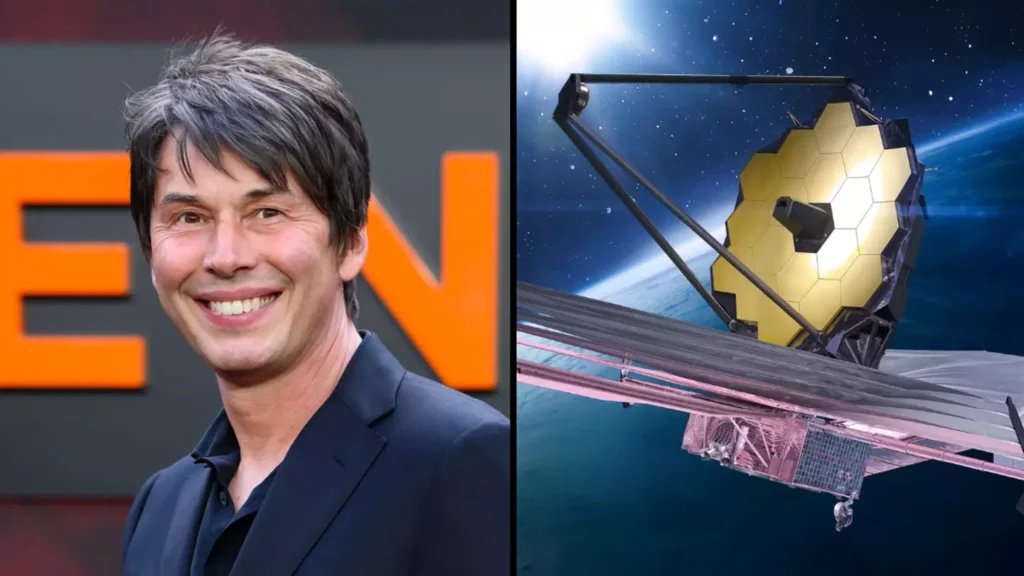Today’s Current Affairs: Professor Brian Cox reveals ‘very exciting’ things that humans will be able to see through the James Webb Space Telescope. The $10 billion genius invention is changing the way we perceive the universe, providing us with groundbreaking insights into the formation of the first stars and galaxies. With its advanced technology, the telescope opens up new possibilities for analyzing exoplanet atmospheres and potentially discovering signs of extraterrestrial life. Professor Brian Cox simplifies the complex science behind the telescope’s discoveries, making it accessible and understandable to the masses. This monumental invention is unlocking the mysteries of the universe, one spectacular discovery at a time.

The wonders of the universe are finally being discovered thanks to NASA’s genius James Webb Space Telescope (JWST), with one of the UK’s leading academic minds explaining exactly what it can provide us as we head deeper into space.
Costing a staggering $10 billion (£7.9 billion), the JWST has made us change the way we think about the universe as a whole.
Launched from the Guiana Space Centre in French Guiana back in December 2021, Webb arrived at its original destination of 1.5 million kilometres from Earth just one month later.
Since then, its purpose has been to take over from the Hubble Space Telescope as NASA’s primary exploration tool in photographing the universe through its state of the art Near-InfraRed Camera (NIRCam).
What it is and what it is doing can be a bit head scratching, though, with there being (naturally) a lot of science talk involved in what is found or hinted at.
Professor Brian Cox, an expert in particle physics in the School of Physics and Astronomy at the University of Manchester, has explained in Layman’s terms exactly what it is seeing – and it’s ‘very exciting’.


Professor Brian Cox has explained its purpose in simple terms. (Joe Maher/WireImage)
Sitting down to do an ‘Ask Me Anything’ over on Reddit, commonly referred to an AMA, he took questions from the public on everything and anything that tickled their fancy.
Posting this in 2022, he said: “I’m Brian Cox, Professor of Physics at The University of Manchester and The Royal Society in London. I’ll be touring the world, talking about the interior of black holes, the origin of life and the Universe itself – with huge screens, cinematic graphics and a comedian.”
One of the top questions was: “What are some of the bigger mysteries that the James Webb telescope is going to help us solve?”
Answer “It’ll be able to see the formation of the first stars and galaxies (because it’s sensitive in the infrared) – which will be very exciting.”
Question 1:
What are some of the mysteries that the James Webb telescope is aiming to solve?
- a. Detecting black holes
- b. Studying exoplanet atmospheres
- c. Observing distant galaxies and stars
- d. Mapping the solar system
Answer: c. Observing distant galaxies and stars
Question 2:
Which special capability of the James Webb telescope is mentioned as ‘very exciting’?
- a. Ability to explore the Milky Way
- b. Photo-synthesis detection
- c. Identifying alien life forms
- d. Formation of the first stars and galaxies
Answer: d. Formation of the first stars and galaxies
What can the James Webb Space Telescope provide us as we head deeper into space?
The James Webb Space Telescope (JWST) can provide us with groundbreaking discoveries of the universe as we explore deeper into space. It has already changed the way we think about the universe as a whole with its advanced capabilities.
What are some of the mysteries that the James Webb telescope will help us solve?
The JWST will help us solve mysteries by being able to see the formation of the first stars and galaxies due to its sensitivity in the infrared spectrum. This will be an incredibly exciting achievement and a major step forward in our understanding of the universe.
What are some capabilities of the James Webb Space Telescope that surpass the Hubble Space Telescope?
The James Webb Space Telescope has the capability to analyze the atmospheres of exoplanets and potentially discover oxygen in an atmosphere, which could resemble photosynthesis. It also has the ability to make discoveries about the origins of black holes and investigate signs of life in space.
Today's current affairs bring us a groundbreaking $10 billion invention that is changing the way we look at the universe. NASA's James Webb Space Telescope (JWST) is providing us with a new lens to explore the mysteries of space. Launched in December 2021, the telescope is now revealing never-before-seen images of the cosmos, thanks to its state-of-the-art Near-InfraRed Camera (NIRCam). Professor Brian Cox, a renowned physicist, has described the telescope's findings as 'very exciting.' The JWST is set to unlock the secrets of the universe, including the formation of the first stars and galaxies, and even the possibility of detecting oxygen in exoplanet atmospheres. This revolutionary technology is pushing the boundaries of our understanding and opening up new possibilities for scientific exploration.








1 thought on “Professor Brian Cox Teases ‘Very Exciting’ Discovery with James Webb Space Telescope: Current Affairs Question and Answers”